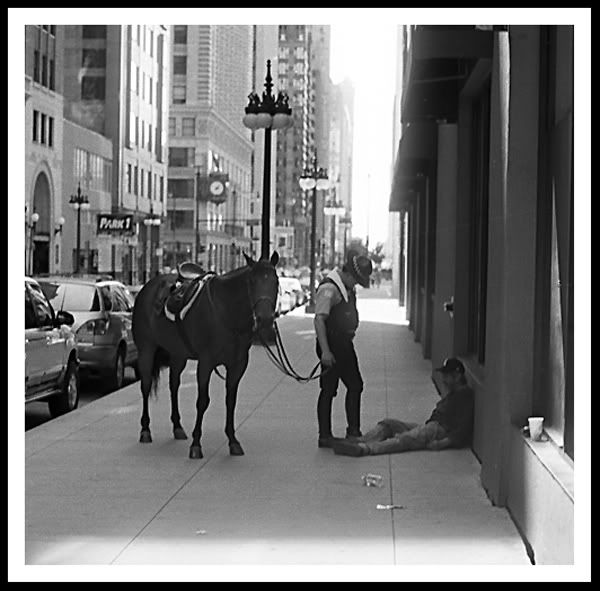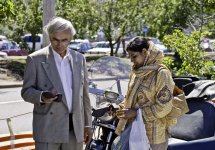F%$# the Decisive Moment--Time for a critique and new concept!
F%$# the Decisive Moment--Time for a critique and new concept!
It's funny to see this thread now, because I have been thinking a lot recently about starting one that is a critique of the practice of the "decisive moment".
I'm not going to try your patience with a specialist's viewpoint, but I will say that I find the idea of the "decisive moment" to be an anachronistic concept whose founding assumptions do not correspond to the way either social relations or collective passions and sensibilities are organized today. In fact, the only thing that is "decisive" about the aesthetics of the "decisive moment" today is its irrevocable disappearance AND the huge nostalgia that apparently accompanies this disappearance.
I suggest we have to contextualize the aesthetics of the "decisive moment" in relation to society, economy and politics. As a practice and not just a concept, "the decisive moment" is not just an aesthetics of the image, but a very condensed series of assumptions that FRAMES THE IDENTITY OF AN EVENT. The aesthetics of the "decisive moment" cannot be separated from ideas about individuality, property, labor and the image of man that for the most part dovetail with notions of possessive individualism, national sovereignty, and anthropological difference inherited from the Enlightenment that defined the high modernity of industrial capitalism.
However, fundamental changes in the mode of production since the 1970s--i.e., the transition from industrial capitalism to cognitive capitalism (usually called "knowledge economy" in the anglophone countries)--have led us to a very new type of social organization, based more on disorganized networks and flexible accumulation than strict models of command and control and mass production. It is very difficult for us now to say where is the actual site of "decision" in society today. We have arrived, in fact, at a point where the standard modernist aesthetics (reflected in the concept of a "decisive" moment) just doesn't correspond to our lived reality.
To put it in a nutshell, whereas the fundamental question of cultural production during the era of industrial capitalism (which was also a period of imperialism, colonialism, differential development, war and revolution) was "who am I (or who are we)?", the fundamental question of our current era is going to be "what can we become?"
The aesethic behind much of what is being called "decisive moment" here today is what I would call "spectacular ethnicization" or more generally "spectacular anthropologization" (which includes gender, race, class etc). It highlights the former question (who are we? or again, who are they?) rather than the latter (what can we become?), and as such deny the possibility that a) objects of the ethnic gaze could be become subjects of unprecedented new innovation, and b) that the viewers of these photos, regardless of their anthropological coding, must share responsibility to become something new and different. To a certain extent "spectacular ethnicization" is practically unavoidable in our era, and within that domain there are photographers who excel and command my admiration. But this is still very far from an aesthetics that could intervene in the field of images or figures of Man and contribute to the creation of something that is really new, really in the process of becoming.
To my mind the documentary style of Claude Lanzmann ("Shoah") and the photography of Philippe Bazin are exemplary in going beyond the tired notion of "decisive moment".








